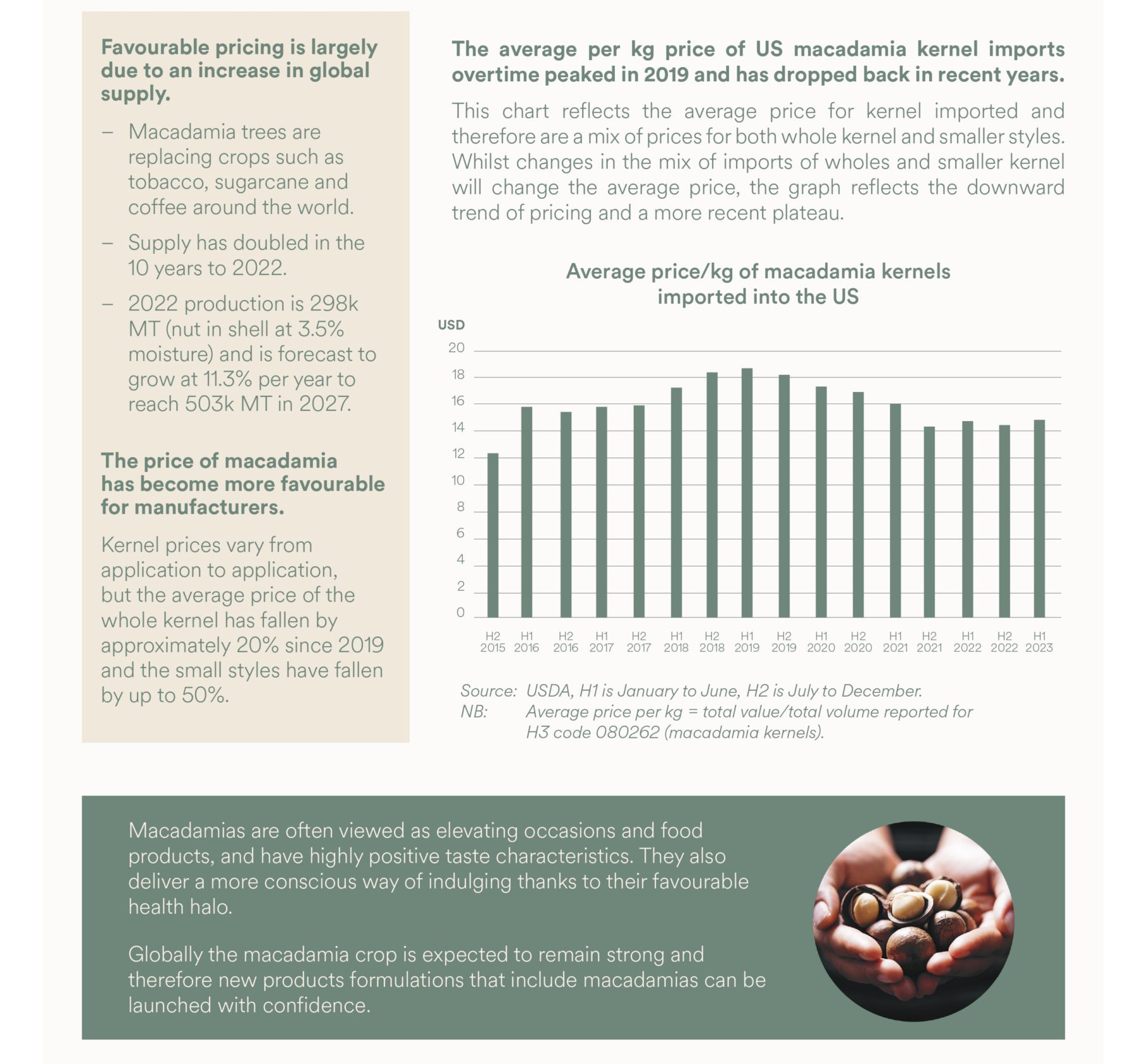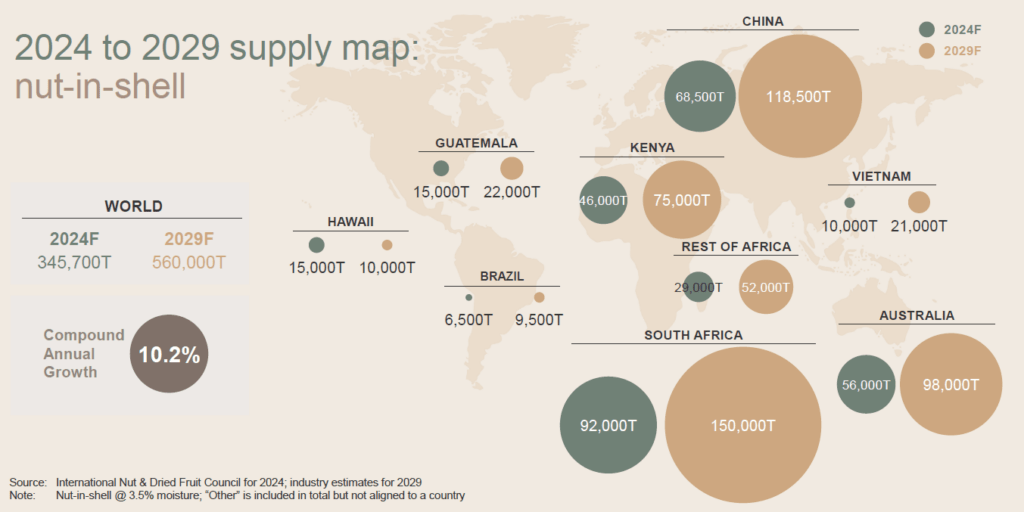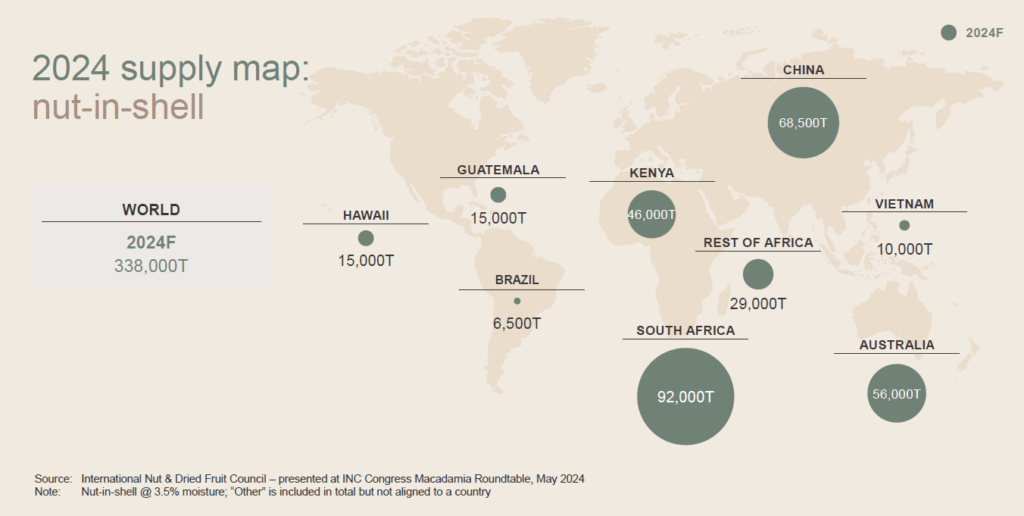Macadamias as an ingredient
Now is the time to include macadamias in the mix.
Find out why macadamias are an excellent choice for an ingredient
In 2022, the total global production of macadamias was 298,914 metric tonnes of nut in shell.
This number has been calibrated to the global standard of 3.5% moisture.
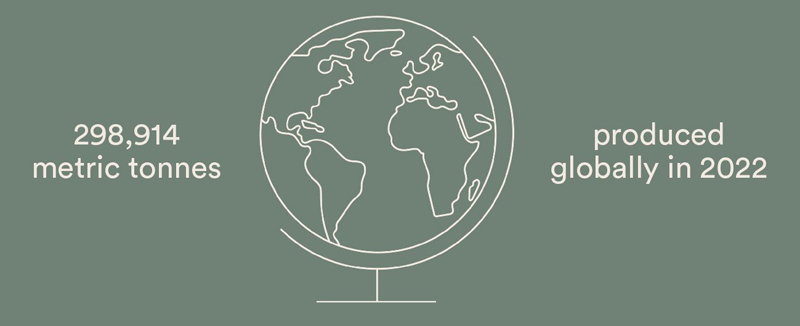
Growth estimates for macadamia supply
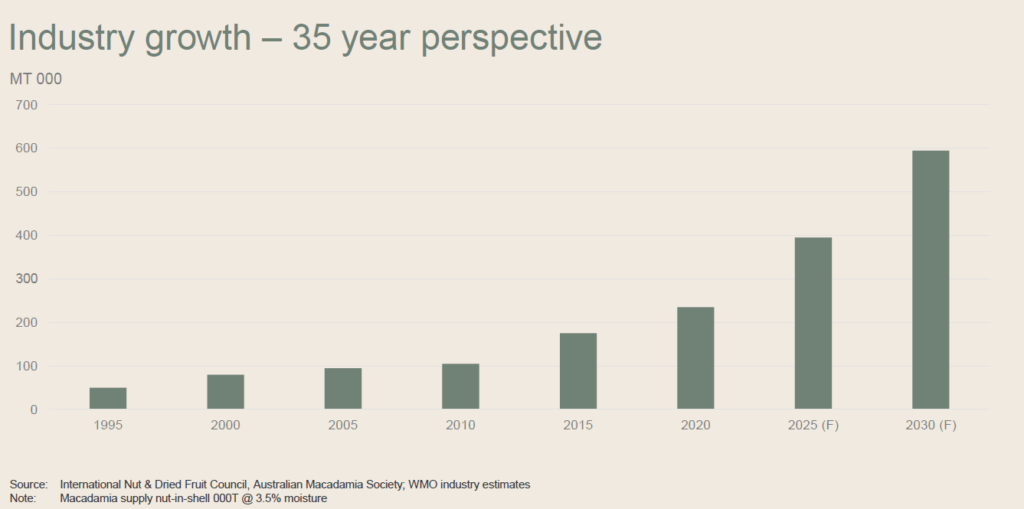
Based on currently available data, the WMO estimates macadamia supply will double in the next 4-5 years, and triple within a decade. By 2030 the industry is forecasting global supply will reach up to 660,000 metric tonnes. Even taking into account this projected growth, macadamias are still expected to account for only one percent of all tree nuts.
INC Global Statistical Review and industry estimates
The ingredients opportunity for macadamias
Macadamias are a premium nut with excellent nutritional benefits that are strongly aligned with long-term food trends. With health-active consumers opting for more products, macadamias help to deliver a nutritionally dense food and elevate products into premium and niche segments. Increased supply, price changes and strong industry marketing support, makes now a great time to consider macadamias as an ingredient in future product launches.

Above all, what people want, is for their foods, beverages and ingredients to provide a health benefit they perceive as natural and intrinsic to the fold. Further to this, naturally functional foods don't need to be backed up by scientifically proven health claims.
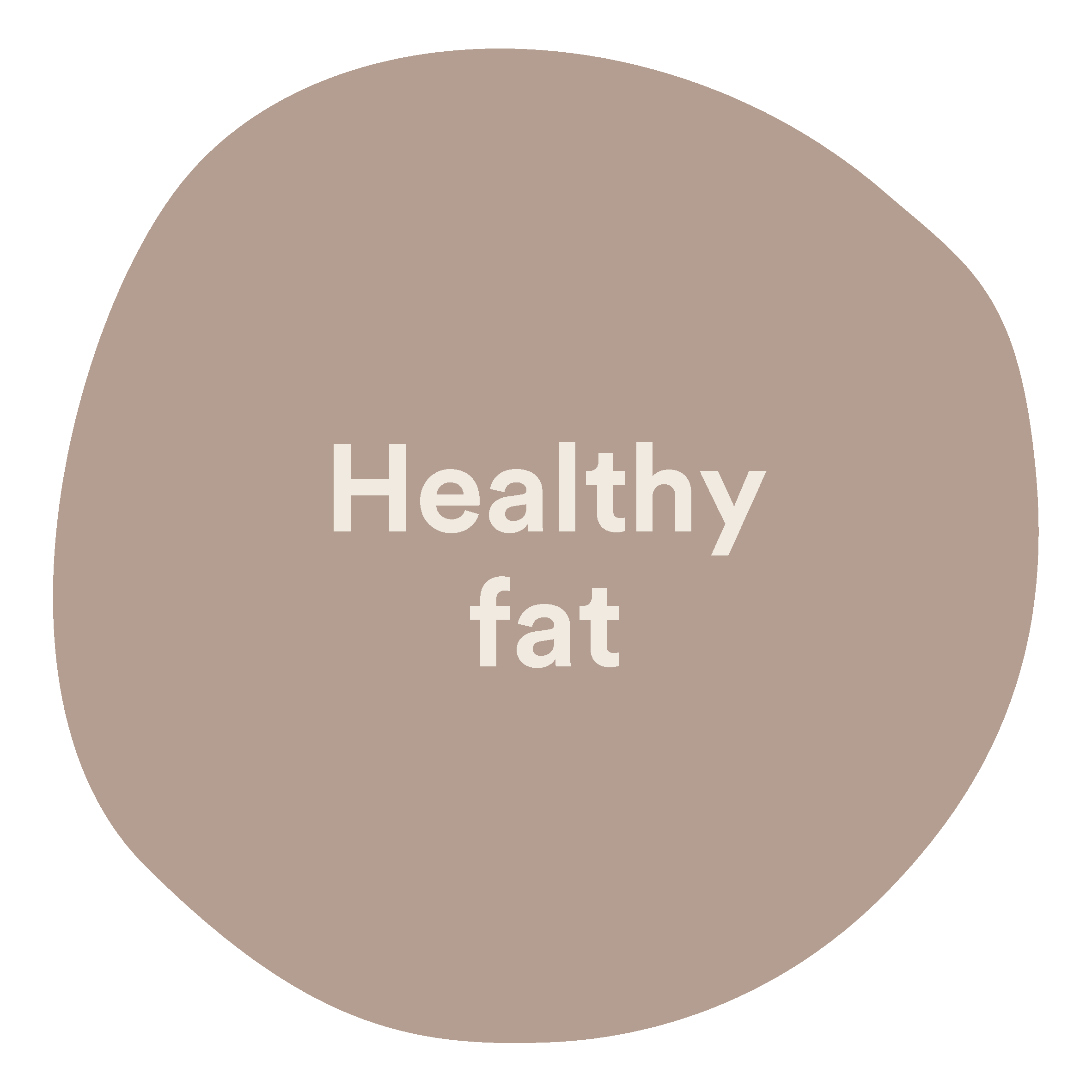
There has been a fragmentation of people's beliefs about food and health and as a result, scientific views on saturated fat have evolved and it has gone from enemy to supporting good health. Resultantly, good fat brands are growing.
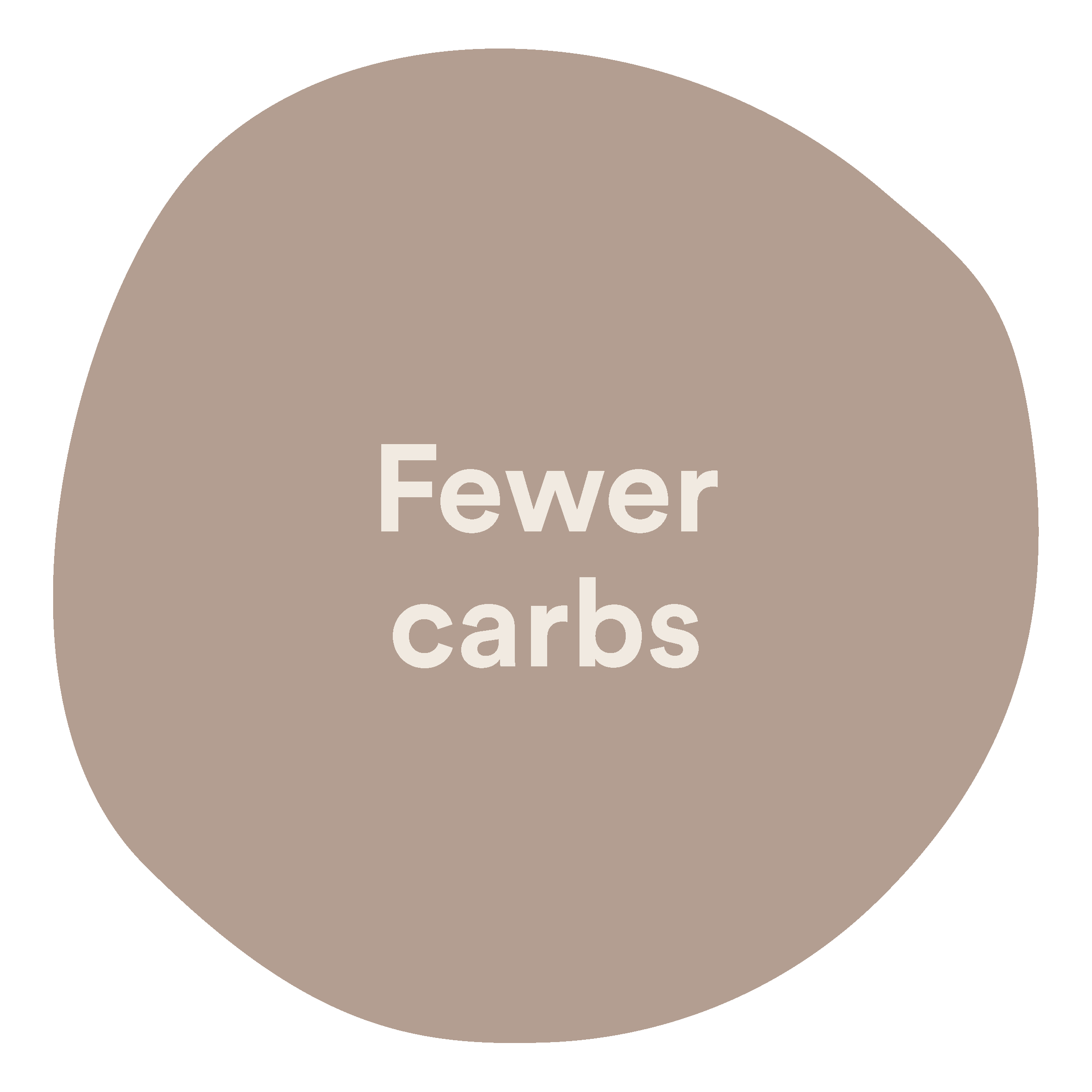
Hand in hand with more fat is fewer carbs. 20-30% of the population are choosing to have fewer carbs. Furthermore, LCHF (low carb high fat) diet is now medical mainstream science and keto diets have built awareness of this concept.

American consumers are embracing the emerging concept of nutrient density and it is even starting to show up in US dietary guidelines.
Products with macadamias are suited to 'health active' consumers & brands
Macadamias are a premium, niche nut with benefits that appeal to customers. Lifestylers and early adopters are a priority consumer target, as they typically like new things, new ingredients and are willing to pay a premium for wellness. These consumers represent 25-35% of the market.
Insights from industry will encourage the development of new ingredient formats. As health and nutrition has become part of every company’s strategy, it’s more important than ever to look for ways to differentiate product offerings.
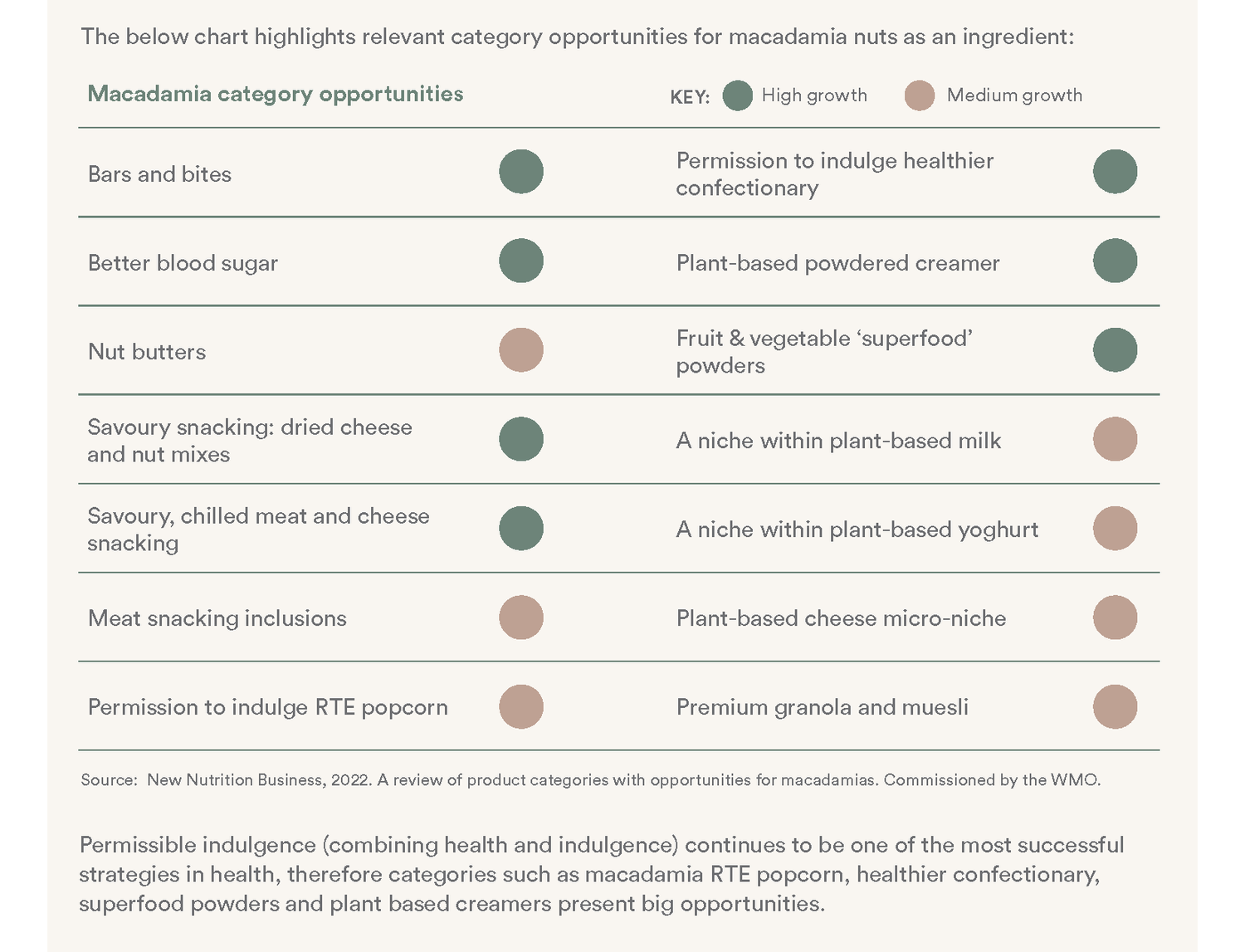
Sustainable choice
Increasingly consumers care about the sustainability of the foods they chose to consume. The natural food conscious consumer wants to know food is grown ethically and without a detrimental impact on the earth. Macadamias are grown in sub-tropical environments in most continents in the world. Whilst there is variation in the farming systems, across the world care is shown by farmers to have a favorable impact of the environment and communities where they grow their crops. The World Macadamia Organisation will build a data ed picture of the different farming systems and highlight sustainability initiatives from across its member countries.

Of the 17 Sustainable Development Goals (SDGs), the WMO will focus on no poverty, zero hunger, clean water and sanitation, decent work and economic growth, responsible consumption and production, climate action, life below water, and life on land.
Water use and quality
Macadamias are mainly grown in rainy, sub-tropical regions of the world within generally within the band of the 35th parallel and the equator. Macadamias are a tree crop and there is a natural water efficiency that comes with this. Traditionally, macadamia crops were not irrigated. For more recent plantings the majority of orchards receive supplemental irrigation in dry periods, with improving irrigation technology enabling farms to be increasingly efficient in water usage.
Climate change and carbon
Macadamia trees typically live for around 40-60 years while some live more that 100 years. Based on their longevity, their store of carbon is long-term contributing to both above ground biomass and in soil organic matter. Macadamia trees can store three tonnes of CO2-equivalent per year in their stems and branches alone, whilst the compost from husks and other organic matter boosts soil carbon and soil health in many macadamia orchards.
Economic development
In many developing countries macadamia nuts' low maintenance requirements and ability to fit into mixed cropping systems makes the nut an ideal food item for small land holders who combine food production with cash-crop options. For both larger and smaller farms, there are often strong connections with local rural communities for labour, supplies and services.
Low impact & circular economy
Macadamia nut production provides several examples of truly circular crop production. For example, the macadamia husk can be returned to orchards as compost, whilst the macadamia shell is often burned for fuel at the processing plants. There is a strong focus on soil health, with the balance of chemical and organic fertilisers applied based on the nutritional requirements of the trees, rather than as a routine activity. The orchard floors are closely managed, as the shallow network of feeder roots draw nutritents from the soil.
Macadamia Price Trends
Pricing on macadamias as an ingredient is now more favourable for product developers.
So it's a great time to consider using it in your formulations.
